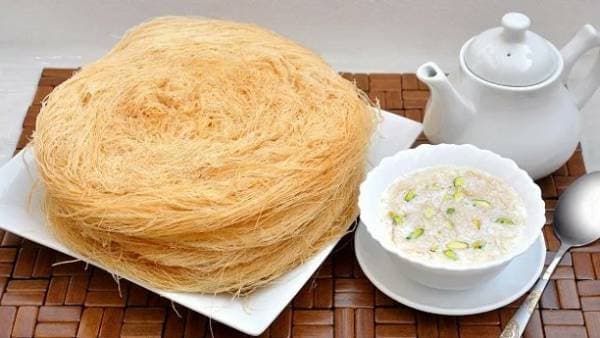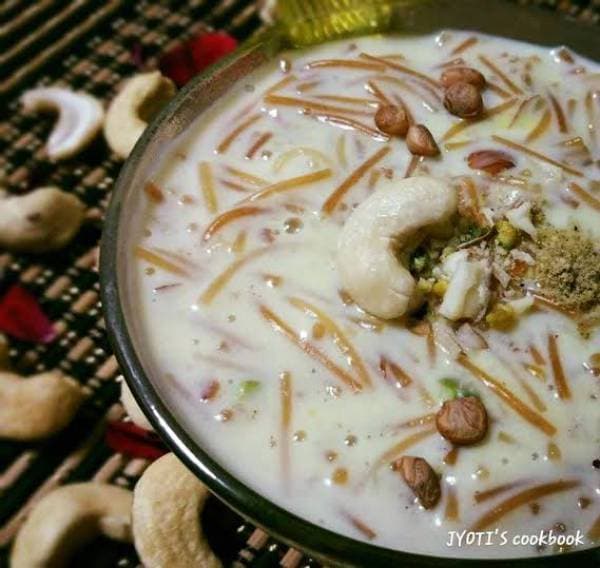Pheni
Pheni has been mentioned in many of our Indian texts as फेनकः . The Antiquity of the dish can be traced from Susruta Samhita. Later works like Madana Pala Nighantu and Varnaka Samucchaya also mention this preparation. Phenaka was on the menu of royal dinners as can be seen from Bhavisasyattakaha and Katha Kosa. It was also common in the Vijayanagar empire.
Pheni is also mentioned in the Margasirsha Mahatmaya of the Skanda Purana. Bhagavan Krishna describes how to offer Pheni as Naivedya in a Shloka:
घृतक्षीरसिताद्यास्ताः कटाहे सुप्रलोडिताः । लब्धासितादिकृसररम्याः स्निग्धाश्च फेणिकाः ॥
Along with Poori, it is Krishna’s favorite dish.

Similarly, there is another sweet dish “Seviyan” (Indian vermicelli) which Ms try to appropriate. But Seviyan is also mentioned in Indian texts by the name सेविकः Lilacharita of Mhaimbhat mentions sweet preparation of Sevika.

Both sweets and savory versions of Seviyan are mentioned in Indian texts. The sweet version of Seviyan is prepared like Kheer/Payasam. While on other hand, a savory version of Seviyan can be prepared using chickpea flour or lentil flour, etc.
Both Phenika and Sevika preparation have been mentioned in the book Bhojanakutūhala written by a Maratha Brahmin Raghunatha. These food preparations are usually prepared using Samita (~Maida) & Ghee. However, Mash (Urad) can also be used for making Mashpheni.
Source: